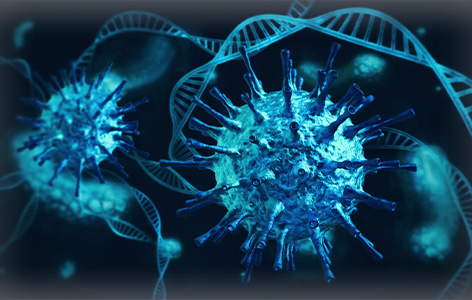
By: Dr. Priska Stahel, ORT Times Science Writer
Understanding how the novel SARS-CoV-2 virus infects cells, replicates and mutates is key to developing a vaccine, preventing transmission and treating cases.
The first case of COVID-19 in Toronto was reported on January 23, 2020. Dr. Samira Mubareka and her team at Sunnybrook Hospital then set out to isolate and characterize the local version of this virus. By comparing the genome of the isolated coronavirus to that of samples from different parts of the world, they can understand how the virus has mutated as it moved through different regions.
In collaboration with researchers at McMaster University, Mount Sinai Hospital and the University of Toronto, Dr. Mubareka’s team collected nasal swabs from two patients in Toronto, isolated the SARS-CoV-2 virus and sequenced its genome.
The Viral Genome
The research team compared their genetic sequence of the virus to the first genome sequence published out of Wuhan, China. They identified several genetic mutations known as single nucleotide polymorphisms (SNPs) which alter the amino acid sequence of proteins. However, it is unknown if the altered sequence affects any functional properties of the virus.
“The SNPs identified so far can help us determine the mutation rate and if there are different strains circulating in the communities. In fact, genomic tracing can inform us on localized transmission or acquired infections linked to travel history. In the long term, identifying these small differences in the viral genome appearing over time can help us understand patterns of spread in Canada,” explains Dr. Hamza Mbareche, a postdoctoral fellow in the lab of Dr. Mubareka. The team’s findings support the efforts of a nationwide bioinformatics team to understand how SARS-CoV-2 is changing over time.
How Does the Virus Affect Human Cells?
Contrary to SARS-CoV, the virus responsible for the 2003–2004 Severe Acute Respiratory Syndrome outbreak, SARS-CoV-2 does not infect human immune cells. Instead, it infects human lung cells, just like the Middle East respiratory syndrome virus, MERS-CoV. Understanding the types of cells that SARS-CoV-2 infects will help doctors determine which treatments would be most effective to combat COVID-19 in patients.
This work in a basic research setting complements bioinformatic and clinical studies that are happening throughout research institutions in Toronto. Dr. Mbareche and other members of the Mubareka lab are exploring other aspects of the SARS-CoV-2 virus, including the use of a mannequin to simulate how the virus spreads. Through multi-modal approaches, the global research community is moving closer towards finding effective treatments and developing vaccines against SARS-CoV-2.




